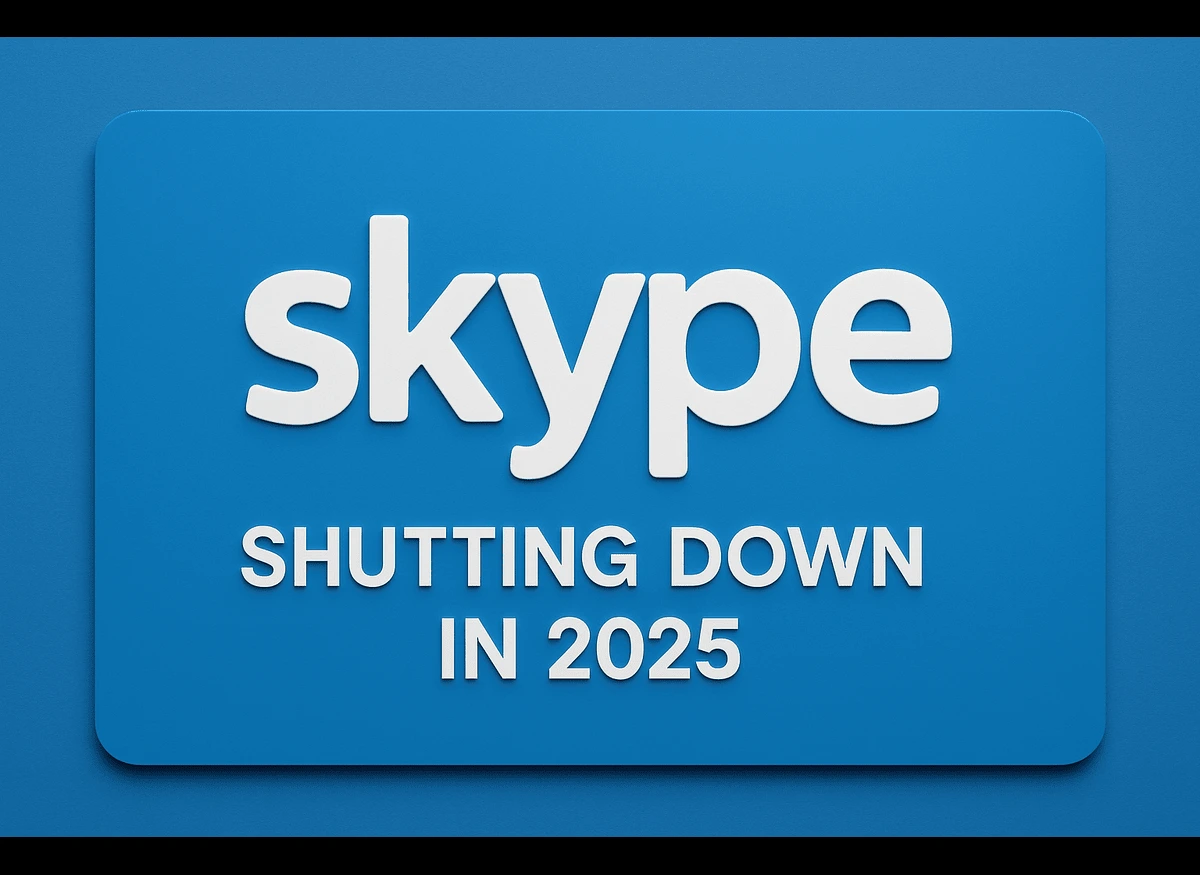
Explore the rise and fall of Skype—from its groundbreaking launch in 2003 to its official shutdown in 2025. Learn why Microsoft retired the iconic platform, how it transitioned users to Microsoft Teams, and how AI is reshaping the future of workplace collaboration.
On May 5, 2025, Microsoft officially shut down Skype, bringing an end to one of the most iconic platforms in internet communication history. For over two decades, Skype transformed the way people connected globally, ushering in a new era of digital communication that would pave the way for the tools we use today.
From Tallinn to the World: The Birth of Skype
Launched in 2003 by a team of Estonian and Swedish developers, Skype quickly gained popularity for offering free voice and video calls over the internet. At a time when international phone calls were expensive, Skype’s peer-to-peer technology allowed users to bypass traditional telecommunication costs, democratizing global communication.
The platform’s ease of use and affordability made it an instant hit. By 2005, Skype had over 50 million registered users, and in 2011, Microsoft acquired it for $8.5 billion. The acquisition signaled Skype’s integration into Microsoft’s suite of communication tools, embedding it into products like Outlook and Xbox.
Skype’s Peak Years: The World’s Video Calling Lifeline
Throughout the 2000s and early 2010s, Skype was the go-to platform for video calls, conference calls, and even business meetings. It became synonymous with online communication, widely used by families, freelancers, and global teams. During pivotal moments like natural disasters, political uprisings, and the early days of remote work, it played a critical role in keeping people connected.
At its peak, Skype boasted over 300 million monthly active users. It powered countless long-distance relationships, online interviews, and even live broadcasts. The word “Skyping” entered everyday language, reflecting its cultural impact.
The Rise of Rivals: Zoom, WhatsApp, and the End of an Era
However, Skype’s dominance began to wane as newer, more agile competitors emerged. Platforms like WhatsApp, Zoom, FaceTime, and Google Meet offered streamlined interfaces, mobile-first designs, and faster innovation cycles. By the late 2010s, these competitors started eating into Skype’s user base, especially in the mobile and enterprise markets.
The COVID-19 pandemic further accelerated this shift. Zoom, in particular, became the de facto platform for remote work and online education, leaving Skype struggling to stay relevant despite its early lead in video calling technology.
The End of Skype, The Rise of Teams: Microsoft’s New Vision
In 2025, Microsoft made the decision to retire Skype, signaling a strategic pivot toward its newer, more robust platform: Microsoft Teams. Teams, which launched in 2017, has rapidly evolved into a comprehensive collaboration hub, integrating chat, video conferencing, file sharing, and third-party app integrations. By encouraging Skype users to transition to Teams, Microsoft ensured continuity while aligning users with its broader vision of unified communication and collaboration.
Microsoft’s move reflects a broader technological shift: from standalone communication tools to integrated ecosystems powered by artificial intelligence. Teams has already begun incorporating AI-driven features such as meeting summaries, real-time translation, intelligent scheduling, and predictive task management. This evolution positions Teams not just as a communication tool but as a productivity platform of the future.
Beyond Skype: The Future of Communication Has Arrived
Skype’s shutdown marks the end of a chapter in internet history but also underscores the rapid pace of technological change. Platforms that once revolutionized communication can be overtaken by newer, more adaptable solutions. Microsoft’s decision to sunset Skype and steer users toward Teams represents both a farewell and a forward-looking strategy—one that embraces AI, integration, and continuous innovation.
As we say goodbye to Skype, we acknowledge its profound impact on how we connect across borders. And as Microsoft continues to build the next generation of collaboration tools, Skype’s legacy will live on—in every video call, every virtual meeting, and every digital connection that traces its roots back to the platform that started it all.






